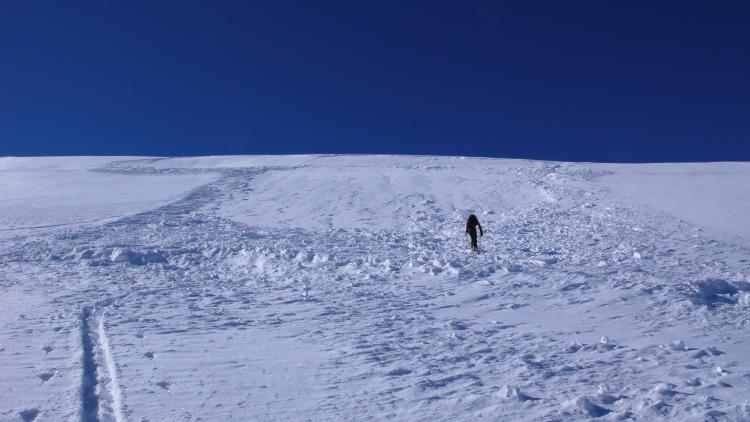Normal 0 false false false MicrosoftInternetExplorer4 /* Style Definitions */ table.MsoNormalTable {mso-style-name:"Table Normal"; mso-tstyle-rowband-size:0; mso-tstyle-colband-size:0; mso-style-noshow:yes; mso-style-parent:""; mso-padding-alt:0in 5.4pt 0in 5.4pt; mso-para-margin:0in; mso-para-margin-bottom:.0001pt; mso-pagination:widow-orphan; font-size:10.0pt; font-family:"Times New Roman"; mso-ansi-language:#0400; mso-fareast-language:#0400; mso-bidi-language:#0400;}
Very early Wednesday morning we received about 8" of new snow accompanied by vigorous winds out of the W, sustained at 40 mph gusting as high as 60 mph. These winds quickly formed sensitive wind slabs which led to a natural avalanche cycle above treeline on E, SE & NE facing slopes shortly thereafter. Ted & I found three different avalanches associated with this cycle. Our investigation revealed that the slabs were running on the previous snow surface, the rain crust/rime combo. We were able to consistently indentify intact surface hoar a few inches below the bed surface. The surface hoar was not involved in this avalanche cycle.
Here Ted works his way up the Double Hill avalanche: Size 1.5, 200' x 200' x 8" Terminus: Mid track

Size 2, 500' x 600' x 1' Terminus: Top of Runout. Super Bowl area, just below Windy Peak.

E - SE pocket 100' x 200' x 8" Terminus: Upper Track.




